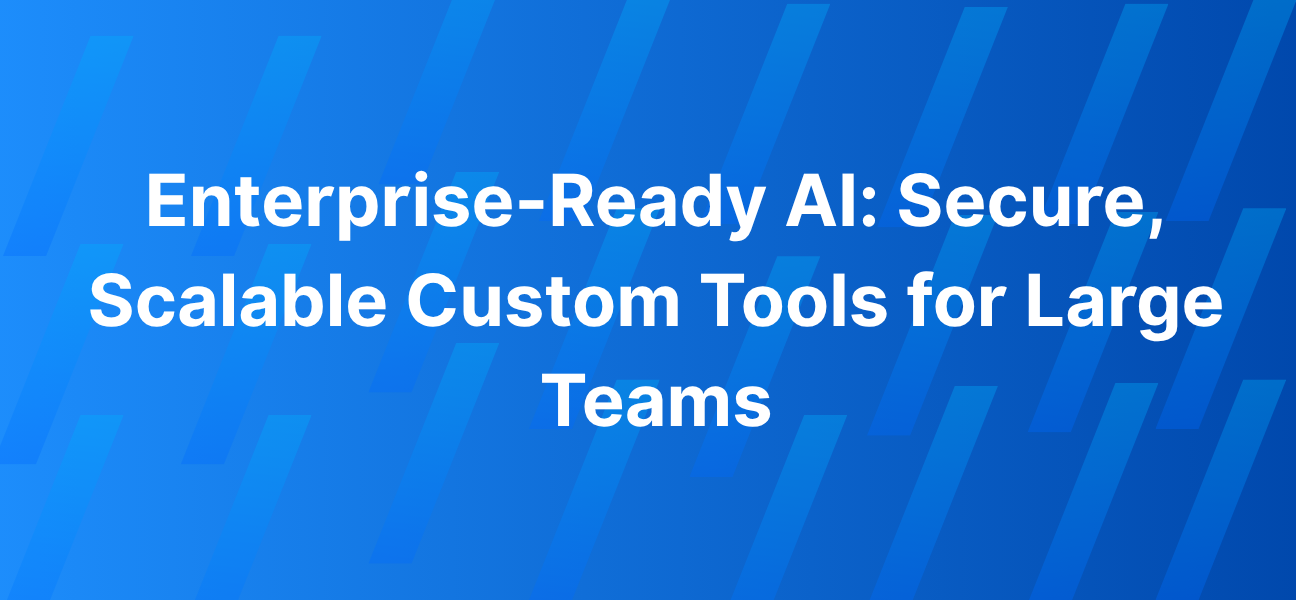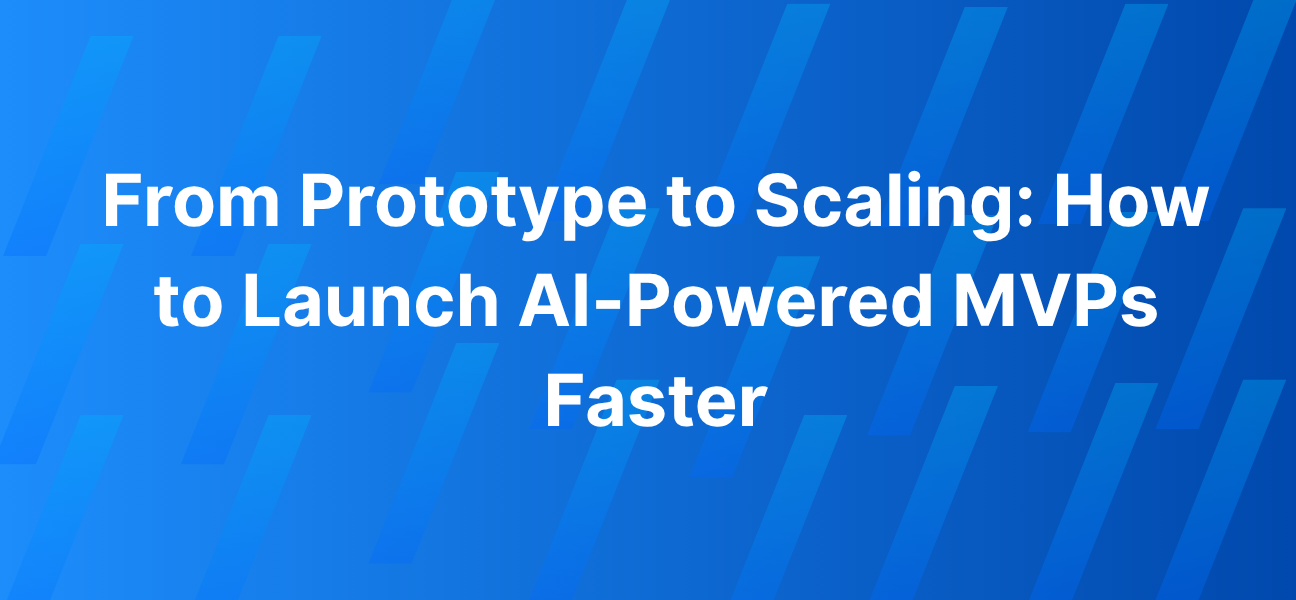Large organizations need AI that does more than research-paper benchmarks: it must be secure, scalable, auditable, and easy to operate across thousands of users and many systems.
Enterprise-ready AI is not a single product — it’s a platform and a set of practices that combine engineering, ML, security and product thinking.
This long-form guide covers the pillars of enterprise AI readiness: security, scalability, MLOps, governance, integration, monitoring, and cost control — and then explains exactly how at20.ai partners with enterprises to design, build, and operate custom AI tools that meet these requirements.
Why “enterprise-ready” matters (short answer)
Enterprises face a different bar than startups:
- Compliance & data residency requirements (GDPR, SOC2, HIPAA, PCI).
- High availability & latency SLAs for internal and external users.
- Complex integrations with legacy systems (ERP, CRM, HRIS).
- Security & auditability needs: who accessed what prediction and why?
- Scale: thousands of users, peak loads, multi-region presence.
If your model can’t meet these demands, it’s a research demo — not a business tool.
Pillar 1 — Security: Protecting data, models and access
Enterprise AI must be designed with security first.
Key practices
- Data encryption — always encrypt data at rest (AES-256) and in transit (TLS 1.2+).
- Secrets & keys management — use Vault/KMS for API keys, model keys and DB credentials.
- Network isolation — deploy services in VPCs, use private endpoints, avoid public model endpoints for sensitive workloads.
- Identity & access control — SSO (SAML / OIDC), SCIM provisioning, fine-grained RBAC for dataset, model, and tooling access.
- Audit trails & immutable logs — every model training run, data access and inference should be logged and traceable.
- Penetration testing & supply-chain security — dependency scanning, container image signing, and regular pentests.
- Privacy & PII handling — PII redaction, tokenization, and privacy-preserving techniques (differential privacy, federated learning where applicable).
Why it matters: A breach or compliance violation can cost millions and destroy trust.
Pillar 2 — Scalability & performance for large teams
Scalability is both horizontal (more users) and vertical (higher throughput / lower latency).
Design patterns
- Autoscaling inference clusters (Kubernetes + HPA / KEDA for CPU/GPU autoscale).
- GPU pooling & model scheduling — manage GPU allocation for batch vs real-time inference.
- Batching & request coalescing — reduce per-request overhead by batching small inferences.
- Quantization & model distillation — reduce model size/latency without huge accuracy loss.
- Edge & multi-region deployments — serve low-latency customers from nearest region; use CDNs for static assets.
- Backpressure & circuit breakers — protect model endpoints during spikes; degrade gracefully.
- Caching & CDN — cache deterministic outputs where valid to avoid repeated inference.
SLOs & SLAs: Define Service Level Objectives (latency p95, availability) and enforce them with autoscaling, circuit breakers and capacity planning.
Pillar 3 — MLOps & reproducible lifecycle
Enterprise AI demands reproducibility and safe, auditable CI/CD for models.
Core capabilities
- Data versioning (DVC / lakeFS) and experiment tracking (MLflow / Weights & Biases).
- Model registry & lineage — every model has metadata, evaluation metrics, training data snapshot.
- Automated pipelines — build training → validation → packaging → staging → canary → production pipelines.
- Canary & A/B rollouts — validate models on real traffic with rollback gates.
- Automated validation checks — unit tests for data quality, schema checks, model performance thresholds.
- Reproducible infra — IaC (Terraform), container images, and GitOps for environments.
Result: Faster, safer releases with clear audit trails and rollback capabilities.
Pillar 4 — Observability, drift detection & reliability
Visibility into what your models do in production is non-negotiable.
Monitoring stack
- Metrics: latency, throughput, error rates, resource utilization (Prometheus / Cloud monitoring).
- Business KPIs: conversion, false positive / negative rates, revenue impact.
- Model quality: accuracy, precision/recall, calibration, confidence distributions.
- Drift detection: input distribution drift, population shift, label distribution changes (set thresholds and alerts).
- Logging & tracing: structured logs and distributed tracing (OpenTelemetry) to debug end-to-end flows.
- Alerting & runbooks: SLO breaches should trigger automated runbooks and human escalation channels.
Why: Early detection of degradation prevents business impact.
Pillar 5 — Governance, explainability & compliance
Enterprises must explain decisions, control model risk, and pass audits.
Governance elements
- Model cards & datasheets — document intended use, limitations, metrics, training data provenance.
- Approval workflows — model promotion gating that includes security, legal and domain reviews.
- Bias & fairness testing — automated checks for disparate impact, fairness metrics, and mitigation steps.
- Audit logs & lineage — who approved, when, and with what data.
- Retention & data minimization policies — define what is retained and for how long to meet regulations.
Explainability: Use SHAP/LIME or counterfactuals to produce human-readable explanations for key decisions where required.
Pillar 6 — Integrations & enterprise ops
AI must become part of business workflows.
Integration patterns
- API gateways & versioned endpoints for consumers (internal apps, B2B partners).
- Event-driven architecture (Kafka, Pub/Sub) for asynchronous workflows and streaming features.
- Feature store (Feast/Tecton) to ensure training/serving parity.
- Connectors for ERP/CRM/HRIS (Salesforce, SAP, Workday) and data warehouses (Snowflake/BigQuery).
- SSO & provisioning to manage user lifecycle and permissions at scale.
Result: Seamless adoption across Sales, HR, Finance, and Product teams.
Cost optimization & operational efficiency
High performance need not mean high cost.
Tactics
- Use spot GPU instances for non-critical training.
- Batch inference for non-real-time workloads.
- Model compression (quantization, pruning) to reduce inference cost.
- Autoscaling rules tuned to traffic patterns.
- Monitor cost per 1k inferences and set thresholds/alerts.
Implementation roadmap: From pilot → enterprise roll-out
- Discovery & risk assessment — data sensitivity, compliance requirements, stakeholders.
- MVP & core use case — pick a high-impact, low-risk process to automize.
- Secure pilot deployment — private network, SSO, audit logging.
- MLOps & governance baseline — data/versioning, model registry, canary pipeline.
- Scale & integrate — feature store, streaming pipelines, multi-region deployment.
- Operate & optimize — SRE, cost engineering, continuous retraining pipeline.
Example ROI (clear arithmetic)
Suppose automating document review saves 2,000 hours/year and the average loaded labor cost is $40/hour.
Calculate annual labor savings:
- 2,000 × $40 = ?
- First compute: 2,000 × 4 = 8,000.
- Then multiply by 10 to account for $40 = $4 × 10: 8,000 × 10 = 80,000.
- First compute: 2,000 × 4 = 8,000.
So automation saves $80,000 per year in labor. If the pilot costs $120,000 to build and OPEX is $20,000/year, payback in years:
- Yearly net savings after OPEX = 80,000 − 20,000 = 60,000.
- Payback period = 120,000 / 60,000 = 2 years.
This straightforward math shows how an enterprise-grade approach can deliver rapid ROI when security and scalability are baked in.
How at20.ai helps — our end-to-end enterprise offering
at20.ai partners with enterprise teams across the full lifecycle:
1. Advisory & Discovery
- Risk & compliance assessment, TCO modeling, stakeholder mapping, KPI definition.
2. Architecture & Security Design
- Secure reference architecture, VPC design, KMS/Vault integration, SSO/SCIM and RBAC patterns, data residency strategy.
3. Rapid MVP & Integration
- Build a production-ready MVP that integrates with your ERP/CRM/warehouse and proves business value fast.
4. MLOps & Automation
- Implement data versioning, experiment tracking, model registry, CI/CD pipelines, canary/A-B deployments and retraining loops.
5. Monitoring, Observability & Governance
- Set up Prometheus/Grafana, drift detectors, audit logs, model cards and approval workflows. Deliver dashboards and runbooks.
6. Production Operations & SRE
- Managed inference, scaling, incident response, capacity planning and cost optimization.
7. Compliance, Certifications & Audits
- SOC2 readiness, HIPAA controls, documentation for auditors, secure process for PII management and consent.
8. Training & Knowledge Transfer
- Train your engineering, ML, security and business teams. Provide runbooks and handover to internal ops or continue as long-term managed service.
Why partner with at20.ai?
- Experience delivering enterprise AI across regulated industries.
- Hybrid delivery: we can build and hand over, or run managed services.
- Focus on measurable outcomes: we align deployments to business KPIs and ROI.
FAQ
Q: Do we need GPUs for production?
A: Depends on latency and model size. Many NLP models can be optimized to run on CPUs; high-throughput or low-latency use cases often require GPUs.
Q: How long to go from pilot to enterprise roll-out?
A: Typical timelines are 3–6 months for a robust pilot and 6–18 months for broad rollout depending on integrations and compliance needs.
Q: Can you help with audits and compliance?
A: Yes — at20.ai supports SOC2/HIPAA readiness, documentation, and secure deployment patterns.
Enterprise-ready AI is achievable when security, scalability, reproducibility and governance are designed into every step.
The payoff is substantial: faster decisioning, lower manual costs, and new capabilities that scale across the organization.
If you want a concrete starting point, at20.ai will:
- Run a free 2-week enterprise readiness assessment,
- Deliver a prioritized 90-day MVP roadmap mapped to KPIs, and
- Provide an implementation plan (cost, infra design, governance) to get you into production safely.
Ready to build enterprise-grade AI that your security, legal and ops teams will sign off on? Visit at20.ai or reply here and we’ll schedule a short discovery call.




